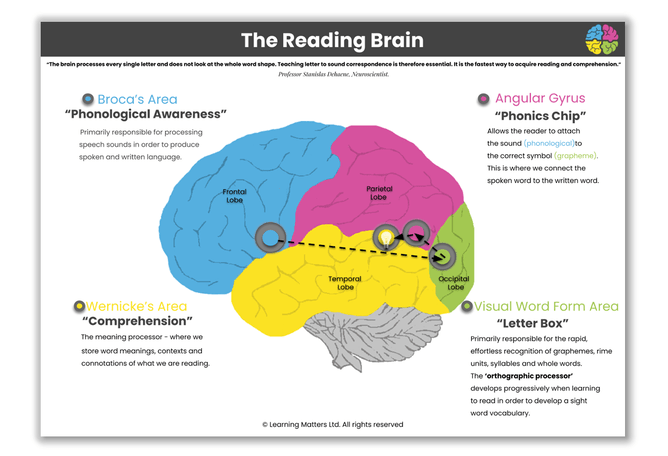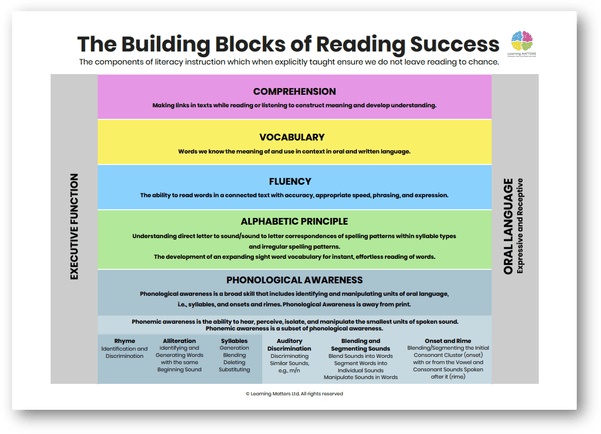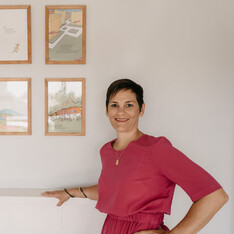A reflection of key areas of conversation from my Chit Chat with Dr Louisa Moats.
There are times we meet other professionals that really have a positive impact on our work. I have to say that one of these experiences for me was meeting Dr Moats at a book signing at the International Dyslexia Association conference in Atlanta in 2016. Whilst she didn’t remember me, I certainly did her. So when I got the chance to connect with her during our events of Dyslexia Awareness month, I was a little excited to say the least.
There are so many pearls of wisdom throughout this chat that I really wanted to ensure they were captured and shared far-and-wide for you to consider as you work to make a bigger difference in your setting.
1. Have you ever asked… What actually is dyslexia?
Dyslexia is an unusual or unexpected difficulty learning to read the words or spell them. The core problem is a breakdown in the brain’s ability to make connections in our speech sound processing system and our memory for written words.
These have to be taught and activated for word reading and spelling to take place.
These problems are most often but not always associated with unusual difficulties with phonological processing (being able to mentally take words apart into their component speech sounds, identify those sounds and think about those sounds, then reflect those sounds in other words to treat spoken language as if it was an object). In order to read and spell you have to be able to think about words as linguistic objects.
Some kids just aren’t wired up to forge these connections in the brain. It is very difficult for them to build the pathways that have to be built.
Speech sounds are processed in the front of the brain and the area that becomes specialised for remembering printed words is in the back (geographically there is a big distance there). We aren’t born with the whitematter that connects these systems. These have to be connected through teaching and learning. We teach our brains to be reading brains.
With a dyslexic brain it is harder to get these processing systems to make these connections. We can support our dyslexic readers by helping them to understand that When their brain learns, it has to form a lot of new connections - it is this that their brain is finding difficult.
We are not born to read - none of us. Reading is a human invention. We know the importance of building a reading network. It is our job as educators to help all children, but more so teach in a way that enables our dyslexic children.
2. Do you wonder if dyslexia is hereditary or developmental?
It is a combination, research is clear that there is an intricate interplay between wiring and environment - nature vs nurture.
Factors include the following:
- How language rich the environment is
- Actions taken early on to mitigate the wiring deficits
- Quality teaching (using structured literacy) from the get go
- Emotional and social context (are they continually supported and encouraged or is anxiety increased because they feel vulnerable and threatened)
- Early success of learning the alphabetic code.
To determine how severe dyslexia is for an individual, we first need to teach them. Their response to the right kind of instruction will indicate the significance of the severity. We don’t change the structured literacy intervention, we come to learn that they in fact need more of this.
Early identification is SO CRUCIAL. We must not wait for failure.
3. What can and how do we minimise the impact of reading failure?
The first thing we have to do is improve the preparation of our teachers, raise public awareness, and parents need to know the warning signs.
There are five key things to take into consideration to minimise the impact of reading failure:
- We all need to know what the warning signs of reading challenge look like
- Teachers need to understand how ALL brain learns to read
- Teaching practice needs to align with what the research and evidence tells us is the most effective
- Any elements that do not align with evidence-based teaching practice should be removed.
- Teachers need to be equipped with the appropriate supporting resources and teaching materials that align with how the brain learns to read. Such as the iDeaL Approach.
Unfortunately, unless teachers are taught this in their training, the entrenched ways of teaching will continue. Elements such as practices with flashcards, telling students to guess at words from pictures, saying to students, “oh just think about what the word might mean”. This has to stop. It is NOT reading.
To minimise the impact of reading failure, we must ensure the teaching system is evidence-based, ensure teachers know how to teach in this way, and help to build the reading network in the brain.
4. The layers of the cake
When considering what needs to be assessed and taught, the analogy of the layers of the cake or building blocks of reading success is incredibly helpful. There are many mistaken ideas around what reading involves. It may be hard to understand, but teaching reading really is rocket science. We need to build reading knowledge in simple and succinct ways. It is more than phonics. Phonics is one layer of the cake, but it is the ESSENTIAL layer (or building block). A novice reader has to go through building the layers of cake and get into the layers of language to become a successful reader.
5. Why is spelling so crucial?
When someone reads it appears they are engaged in a visual imprinting process, or a visual memorisation process. Which isn’t the case. What’s actually happening is that they are processing the written word in terms of the language the word represents.
When it comes to spelling, we head into language processing overload. If we can support our students to develop automatic recall of sound (phoneme) to symbol (grapheme) and vice versa then this is reduced significantly during the process of reading and writing. Teaching spelling in a systematic way assists with this greatly. It sets out to ensure that we don’t leave the long term storage of these smaller units of sound and letter representation to chance. We need them instantly accessible when the cognitive load of reading and writing increase.
In our visual word form area, in order to read the word we only need partial memory (just enough to make a match to spoken vocabulary with written), but in order to spell a word, we have to remember every single letter.
Spelling is very diagnostic, when you know what to look for. You can tell so much about a student’s understanding of the language, sound, structure and letter patterns from their spelling.
- Is the student representing the speech sounds in a logical way?
- What does the student know about graphemes?
- What does the student process about the meaningful parts of words?
- Is the student aware of the grammatical role when it comes to adding suffixes?
We know that more often than not with our struggling literacy learners, there is a discrepancy between spelling and reading. We need to and can minimise that difference.
I truly hope that this chit chat and the information we discussed is helpful to not only raise awareness, but to also build knowledge and to provide affirmation for those of you already implementing a Structured Literacy approach. That lesson framework - SPOT ON!
As a profession we must be able to speak to what is going on with our students. We need this knowledge as teachers…. We deserve this knowledge. It’s out there - go get it!
- View more Chit Chats with experts in literacy.
- View our Leap into Literacy page.
- Download our FREE Dyslexia Factsheet PDF.
Carla McNeil
Carla is the Founder and Director of Learning MATTERS Ltd. Carla has been a successful school Principal, Mathematics Advisor and Classroom teacher.











